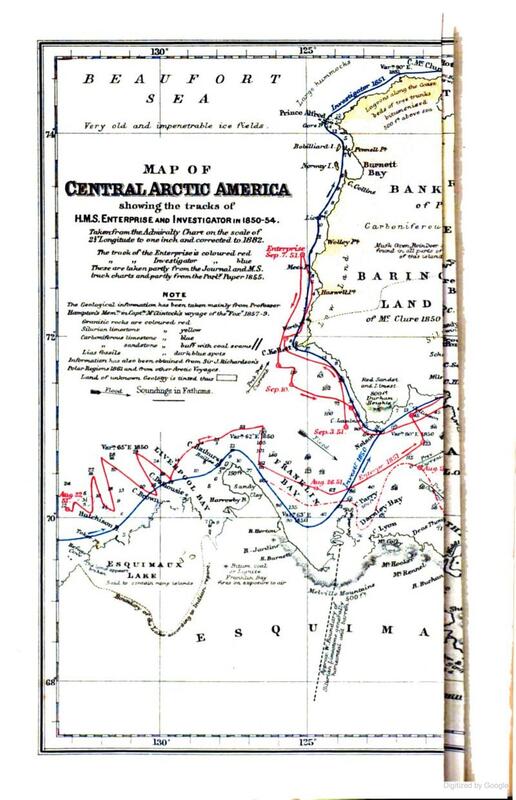Richard Collinson 1850-55
After Sir James Clark Ross's 1848–49 expedition failed to locate Sir John Franklin and his crew, the Admiralty commissioned another search mission, appointing Captain Sir Richard Collinson to lead. Collinson, a distinguished officer in the British Royal Navy, had an exemplary career marked by notable service records, demonstrating exceptional proficiency in navigation, command, and resilience. John Charters, who had served under Ross during the previous rescue mission aboard HMS Enterprise, joined Collinson on this subsequent expedition, once again aboard HMS Enterprise, to search for the missing HMS Erebus and HMS Terror.
Collinson was in charge of two ships, the HMS Enterprise and the HMS Investigator, though he captained only the HMS Enterprise. The two ships set sail from Plymouth on January 20th, 1850. Though they intended to stay together, the two ships separated somewhere around Cape Horn and never reunited. Throughout the expedition, Ice was a seemingly unassailable barrier. After making it past Point Barrow, Alaska, in August of 1850, impassible ice forced Collinson to return south and winter in Hong Kong. Ice conditions once again impeded progress in 1851, and in 1852 and 1853, the enterprise was frozen in Cambridge Bay. In August of 1854, after nearly three years of being stuck, Collinson reached Point Barrow.
Despite enduring unimaginable hardship and isolation over more than four years—and coming close but ultimately failing to find the Franklin expedition—Collinson's mission yielded significant scientific, geographic, cultural, and societal advancements. Throughout the expedition, the HMS Enterprise and the HMS Investigator conducted scientific experiments ranging from physics and meteorology to geography and acoustics. They mapped new areas, such as the Prince of Wales Strait and Victoria Island, while engaging with Indigenous communities to gain critical survival knowledge and a deeper understanding of the Arctic environment.


